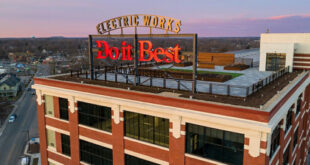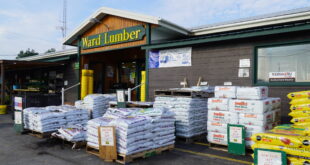Assuming you run a profitable operation, making a capital investment in your business should be one of the best financial moves you can make.
Sometimes you spend out of necessity; for example, the roof needs a major repair or the furnace needs to be replaced. These are investments you seldom can avoid—you simply make them because you need to keep your business running.
Other times, you make an outlay of cash because you want to increase your profitability; for example, buying a delivery truck, doubling the size of your building or purchasing new fixtures. These are the investments that should have the biggest payoff because they allow your business to grow.
So how do you decide how to best spend your hard-earned cash? Not every investment will offer the same return, and every business is different in its needs.
To determine the value of an investment, you should consider a combination of factors, such as your own goals for your business, your market and your cash flow. Always consult your CPA or financial adviser before making any major decisions.
But to help you get the decision-making process started, here are five questions to ask yourself before you decide where and when to invest money in your business.
“What’s the real value of my business?”
To begin, a good exercise is to step back and look at your business from the eye of a banker or a potential buyer. As the owner with much time and passion invested in your business, you may easily inflate the value of your operation; now is the time to shed your bias and understand its actual worth. If you ask a bank for money, you need to back up your request with numbers on your balance sheet. In addition, after the investment, you want to calculate your return, so knowing the real value of your business now gives you a baseline for comparison later.
 Compare your financials with industry averages. Hire a CPA to get a professional audit for a true valuation of your business, but also get a general overview of how well you’re performing by looking at average numbers from the industry. As president of the Central Network Retail Group (CNRG), Boyden Moore assesses the value of a store on a regular basis. His company acquired 12 businesses and a combined 41 stores in the past two years. When he considers a store for purchase, there are four numbers he uses to tell the story of its value: sales, gross profit, payroll and building occupancy expenses.
Compare your financials with industry averages. Hire a CPA to get a professional audit for a true valuation of your business, but also get a general overview of how well you’re performing by looking at average numbers from the industry. As president of the Central Network Retail Group (CNRG), Boyden Moore assesses the value of a store on a regular basis. His company acquired 12 businesses and a combined 41 stores in the past two years. When he considers a store for purchase, there are four numbers he uses to tell the story of its value: sales, gross profit, payroll and building occupancy expenses.
One of the best tools that can help you see how your business would look to a banker or buyer is the North American Retail Hardware Association’s (NRHA) annual Cost of Doing Business study (CODB).
“Use NRHA’s Cost of Doing Business study to compare items in your business with the top 25 percentile,” Moore says. “Your business will be more attractive to a buyer if you’re leading the industry rather than lagging.”
Use these numbers to determine the strength of your store and if you’re able to handle an investment. Compare them to the industry standards, as reported in the 2012 CODB. The complete 2013 study will be available soon and is free to all NRHA members.
“Can I afford to invest?”
It’s a classic catch-22: Do you wait until you have the cash to invest or invest so you will have the cash you need? More than likely, the reason you want to invest is to create advantages for your business that will increase profitability. But if you’re not already running a strong business, be careful that an investment will not push you into the red.

Work with your cash cycle. While you may be flush with cash in the spring, don’t take that as freedom to spend. Calculate how much cash you need to make it through the beginning of the year, when sales may slow, when determining your capacity to handle an investment.
Calculate your debt to equity ratio. Having a certain amount of debt is not negative, but rather could mean you’re properly leveraging your assets to earn more money in the long term. Find out if you have too much debt, or not enough, with a simple calculation: Debt to Equity = Total Liabilities/Net Worth. A 1/1 mix is practical. A ratio below 1 indicates more equity than liability (you’re safe to consider an investment); a number above 1 means you may have too much debt.
Manage your accounts receivable (A/R). This is a good place to generate extra cash flow. Look for changes you can make in A/R to wean customers off store credit and onto their own credit cards. (See retailer T.J. Comstock’s column on Page 60 of the February 2013 issue of Hardware Retailing or at hardwareretailing.com.)
Calculate your return on net worth. First determine how good of a return you’re already getting on your investment by calculating your return on net worth. If this number isn’t where you’d like it to be, ask yourself why. Are there aspects of your operations you need to change? Will making this investment allow you to improve on the deficiencies that have caused this poor number? If you are unable to extract a good return on the assets you already have, investing more money won’t change that unless you have a solid plan for fixing what’s broken.
“Why do I want to invest?”
Next, ask yourself how you hope to profit from your investment. While investing in your store should increase revenue, not every investment is equal in its effectiveness. “When deciding to make an investment in your business, first ask yourself, is this really adding value, or is it just an albatross?” Moore says.
Any investment, of course, should help you be more competitive, but it can be easy to inflate the real value it will have on your business. “Ask yourself, is this something I need or something I want?” says T.J. Comstock, owner of four stores in Montana. “Does the store really need it or do I just want to stroke my own ego?” The investment should add incremental value to your business, not detract from your main customer base or company mission. Here are some possible ways an investment could add value.
Support your brand. Decide if the investment you’re about to make reinforces your store’s brand message or detracts from it. “As an independent retailer, you can best differentiate yourself by demonstrating your brand,” says Brian Landis, managing director of the Butler Business Consulting Group at Butler University. “So when choosing how to invest your money, look for those ways that support your brand message.” Support your brand, for example, by investing in training programs so your employees are prepared to provide excellent customer service.
Support your brand by being different from your competition, which requires continually looking to see what they’re doing and not getting comfortable with the status quo. “Too many retailers get to feeling good about themselves and stop looking at their competition,” Landis says. “All the management-level employees in your store should be regularly out looking at your competition.”
Make a preemptive strike. Oftentimes, preparing for a new competitor can be the motivator to investing money in your store. When another independent hardware store announced plans to move down the street from his store, Comstock went straight to the bank to discuss plans for a major remodel. In a defensive strike against his coming competition, he updated signage, reset the entire store and expanded categories. He considers it money well spent, as he was able to maintain his customer base and create more competitive assortments.
Improve the physical appearance of the store. Some investments you make will have indirect returns, but they are just as important as those you can directly measure. Investments that have to do with the physical appearance of the store, such as store signage, new fixtures, new lighting or a new coat of paint, offer returns in a more attractive and shoppable store, which is an important part of customer service. Make an evaluation of your store’s appearance part of an annual business review. For an outside perspective, ask a fellow retailer or trusted customers to point out areas that need improvement.
Improve your operations. “A POS system is one of the most important investments you can make, because it refines your operation and gives you the tools you need to improve your inventory turns,” Comstock says. To maximize your investment, utilize all the tools POS software has to offer, such as how to adjust your prices and manage your inventory. This system will quickly pay for itself in different ways, such as through its ability to quickly generate reports that previously had to be created manually or by identifying shrinkage issues.
Own your building. One of the biggest investments you can make is the decision to own the property where you operate. Opinions on whether you should own or lease vary. The pro-lease side of the argument believes that investing in inventory and generating more sales is the best path to long-term profit. The pro-buy side of the argument contends that owning real estate offers more flexibility and an intrinsic value beyond the value of your business and a cash asset when you decide to leave the business.
If you recently purchased your business, it’s advisable to start with a lease. “I prefer to lease first, get the inventory paid off and make sure the store will get off the ground before I consider buying,” Comstock says. It may be easier to convince a bank to loan you the money for a purchase after you pay down your initial investment in inventory and fixtures and prove the business viable.
If you decide to buy, first consider the potential long-term value of the property, says Beth Carroll, instructor of entrepreneurship and innovation at Purdue University. “Ask yourself questions such as: Is the neighborhood going to sustain itself or is it on the decline? Does the property have alternate uses? Will there have to be major renovations to the building to meet code requirements? Will this negatively affect your cash flow, and in return negatively affect your ability to meet your short-term financial obligations?” she says.
“Can I cut my expenses first?”
“Look for the low-hanging fruit to trim before spending any money,” Landis says. Make sure you’re being efficient with your money now before investing any more. In addition, maximum cash flow will give you better standing if you must approach the bank for a loan. Sometimes that means cutting expenses.
Measure operating expenses. According to NRHA’s CODB, high-profit hardware stores have operating expenses of 36.4 percent of net sales. Compare that with the number from your store. A higher number is your signal to dig deeper for ways to cut costs.
Analyze staffing expenses. One of the biggest expenses, and one of the most difficult places to cut if you must, is staffing. According to the CODB, payroll expense for high-profit hardware stores is less than 19.8 percent of net sales. If you need to cut this expense, first try making adjustments to schedules so your level of staffing matches your average customer levels for that time period. The more painful solution is to cut staff, but failing to be honest about whether you can afford to keep an employee or not will be detrimental to your business in the long term.
“I’ve seen a lot of retailers paying and trying to keep staff on when they can’t afford to,” Moore says. “For a small business, cutting staff is a tough decision, but you need the conviction to do what’s right for the business.”
Look for other, smaller and less painful ways to cut costs. Those ways include renegotiating your lease; auditing your store service providers (such as credit card service and trash service) to see if you can get a better deal somewhere else; or offering to provide invoices and statements online to save the expense of mailing.
“Do I plan to leave the business soon?”
If you’re near retirement age or have plans to sell the business soon, you may want to think differently about how you invest in the business. You want to get the most money for the business you worked hard to build, but you may want to approach your investment strategy a little differently. If you’re working through a succession plan, now is the time to offer the next generation of owners your list of possible capital investments and discuss the appropriate timing for making them.
Focus on cash flow. Buyers are mainly interested in a revenue stream and the value of your building. A buyer evaluating your business will first look at your past three to five years of income statements, Carroll says. A solid profit means more to a buyer than a flashy store. If you’re within a couple of years of leaving the business, now may not the time for a major investment if the return on that investment won’t readily appear on the balance sheet. “It doesn’t mean much to me if a retailer just bought new fixtures, a new computer system or a new truck. If he’s running a so-so business, then it’s going to get a so-so valuation,” Moore says.
Maintain vs. replace. If you plan on leaving the business soon, your building should be well maintained, but instead of replacing all of your aging equipment, repair and maintain as much as possible. More than likely, you won’t get a full return on your investment in that new equipment before you sell, and the outlay of cash will cut into your revenue stream. The new owner may want to redo items such as signage or fixtures, so new items may have no real value in the buyer’s eyes.
 Hardware Retailing The Industry's Source for Insights and Information
Hardware Retailing The Industry's Source for Insights and Information








